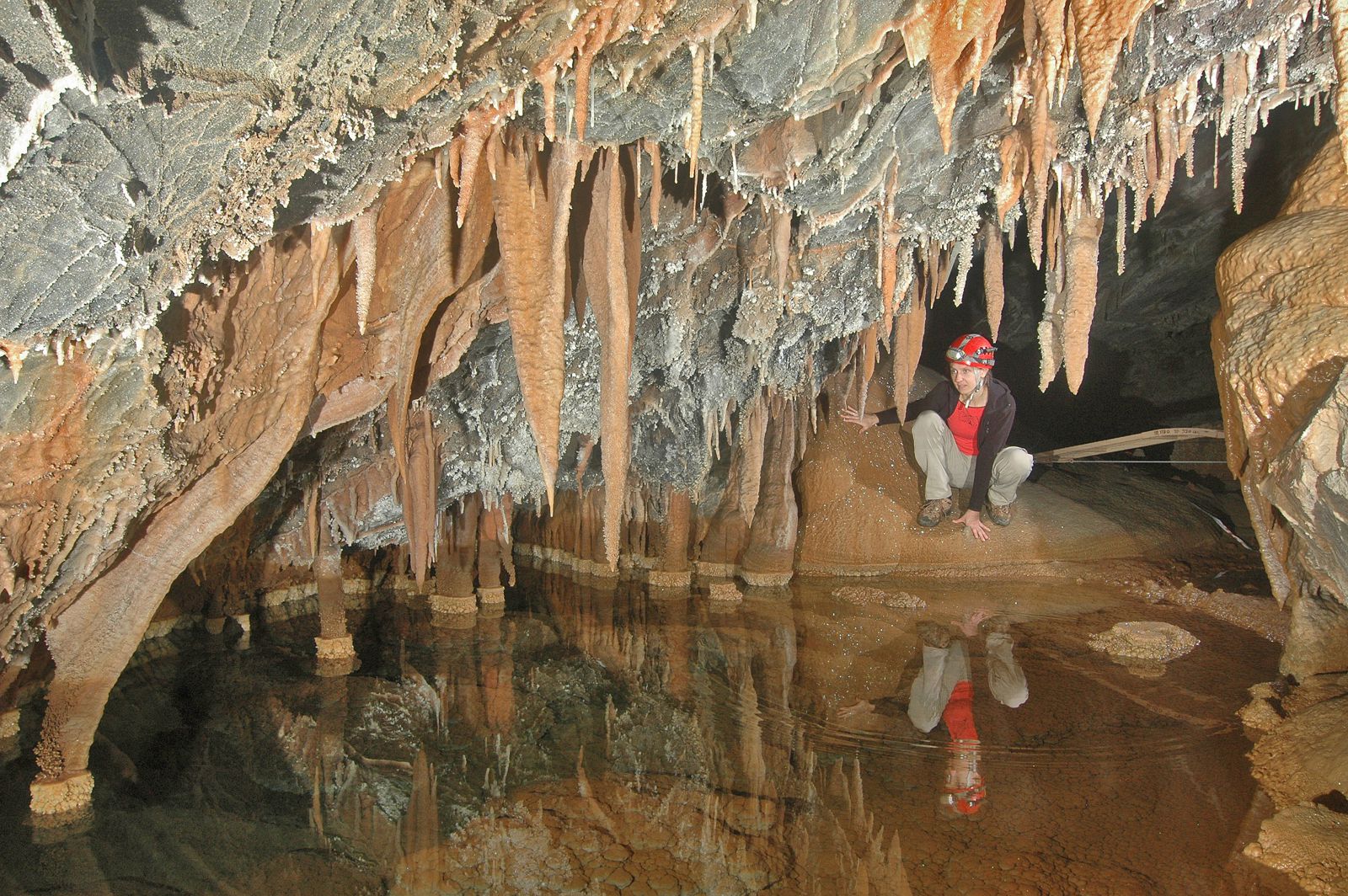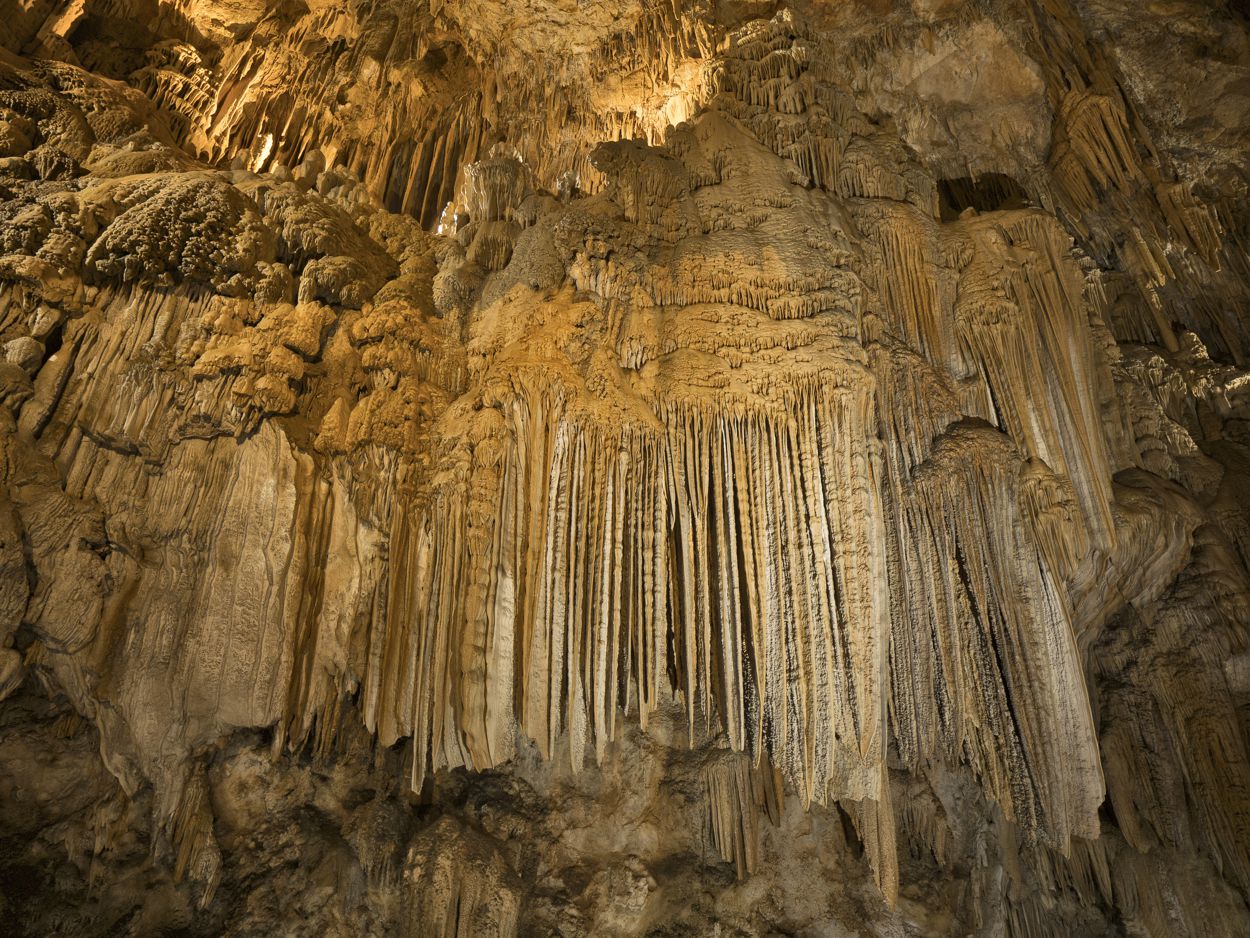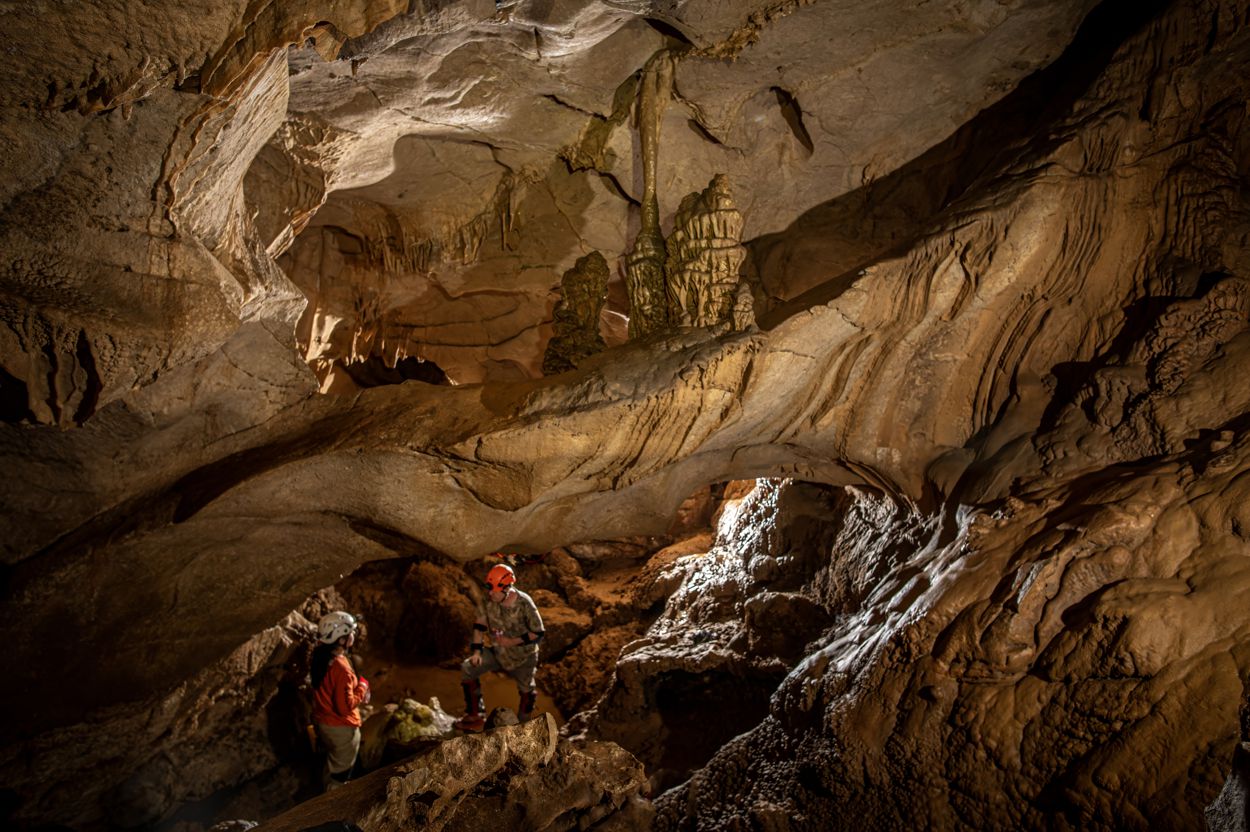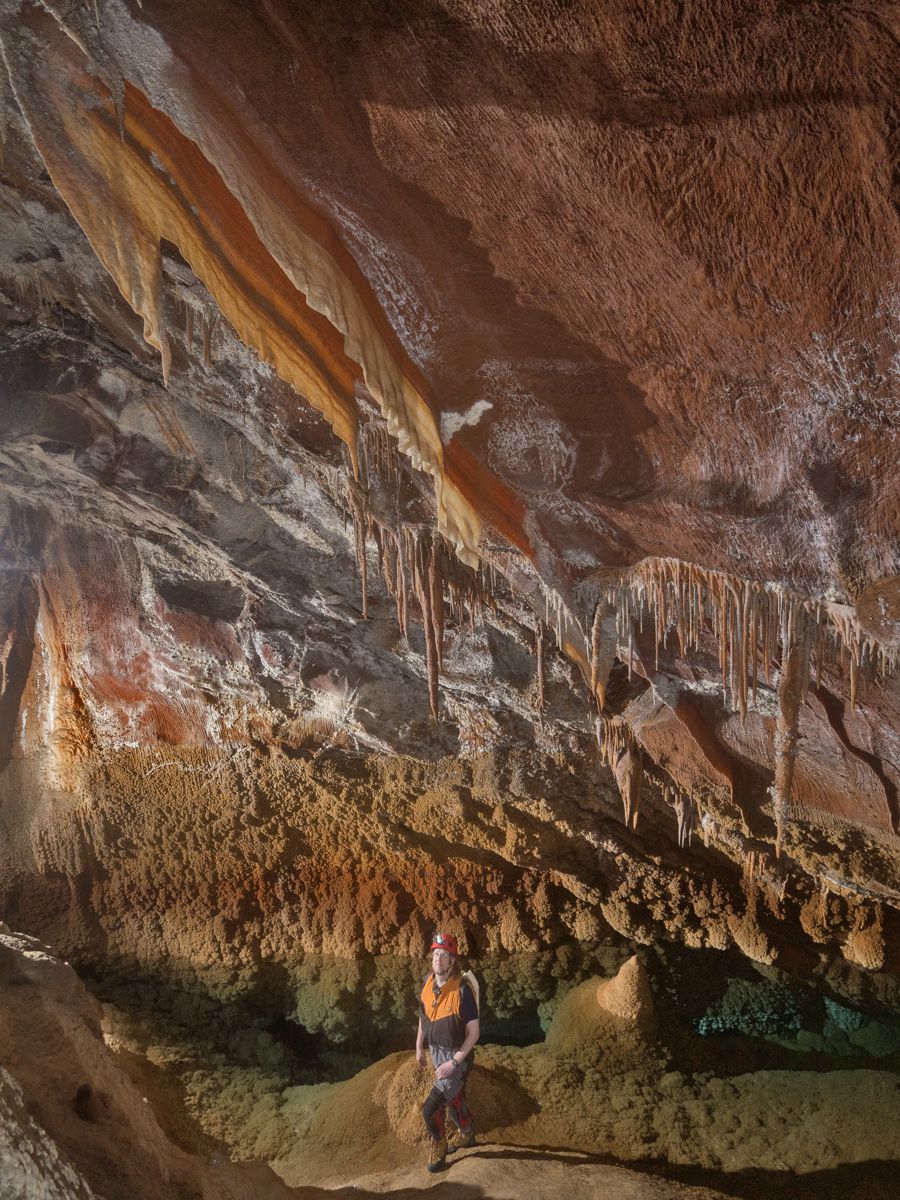
Hypogene caves are the odd ball of the caving world
Different hydrology and chemistry makes for a different type of cave found in only a few locations in California
Hypogene Cave Geology and Hydrology
When the conditions are right, some limestone and marble caves can be formed by water rising up from deep within the Earth. This compares to most caves formed by water that was recently rainfall and that comes down from above. In mountain environments and with faulting, like much of California, these upward rising waters are more common. Once water has been deep within the Earth, other things may come up with it. The water may be warm or hot, and it may carry minerals that create much stronger acids when exposed to oxygen near the surface. Overall, there are many different processes that can make the acidic fluids that make hypogene caves, including volcanism, mineral deposits and water that came in contact with oil and gas and more. Once the acidic water is done, hypogene caves are particularly likely to contain unusual minerals and crystalline deposits.
Hypogene caves are rare, even in a state with a very active geology like California. But they do occur in the California desert, there are a few in the Sierra Nevada, particularly in Mineral King in Sequoia National Park. More are found in the McCloud Limestone of Shasta County near Redding.

How can I see a California Hypogene Cave?
There are great opportunities to see hypogene caves north and south in California. Up north near Redding, check out Lake Shasta Caverns. You will notice the cave’s smooth walls, its depth and its many cave formations. In southern California head east to Providence Mountains State Recreation area with Mitchell Caverns, which is actually two caves that have been linked together. This is another cave with lots of cave formations.

